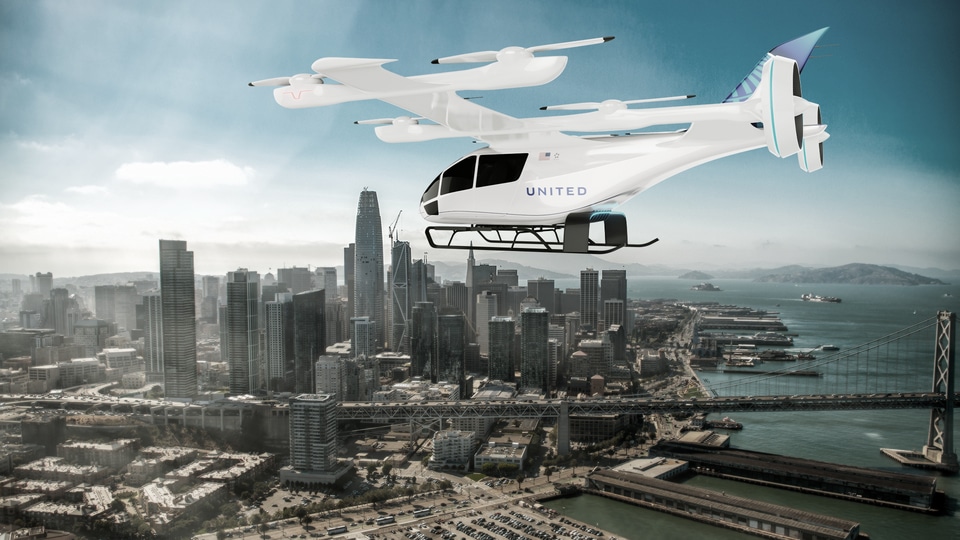Aerospace
FAA Issues Plans for Air Taxis and eVTOLs scaling up US Operations by 2028

The FAA published an implementation plan outlining the actions it and others need to take to securely permit enhanced air mobility operations in the near future. The “Innovate28” plan outlines numerous elements and the order in which they must take place for operations to be at scale at one or more sites by 2028.
Archer’s Midnight eVTOL to Make European Debut at Paris Air Show 2023(Opens in a new browser tab)
The strategy will maximize the utilization of current practices and infrastructure to make entry into service normal and predictable. It describes how the organization and its allies would certify aircraft and pilots, control access to airspace, guarantee pilot training, build infrastructure, uphold security, and include communities.
Today’s broad effort follows the agency releasing its airspace blueprint and proposing a comprehensive rule for training and certifying pilots to fly these aircraft.
Uber reveals its flying taxi prototype for UberAir 2020 I UBER skyport(Opens in a new browser tab)
The plan’s highlights include:
Operations
- Pilots will be able to fly the new advanced mobility aircraft to and from multiple locations at the sites, using predetermined flight schedules with pilots aboard.
- Advanced air mobility aircraft likely will operate up to 4,000 feet altitude in urban and metropolitan areas, using existing or modified low altitude visual flight rules (VFR) routes where possible within controlled Class B and C airspace around major airports.
Infrastructure
- Infrastructure design, development, and implementation will be the responsibility of operators, manufacturers, state and local governments, and other stakeholders.
- Initial operations of advanced air mobility will take place at already-existing heliports, commercial service airports, and general aviation airports. Installation of charge stations, parking spaces, and taxi lanes might require modifications.
Power Grid
- To support sophisticated air mobility operations, the electrical power grid may need to be upgraded.
- The FAA and the National Renewable Energy Laboratory of the Department of Energy have an interagency agreement to study how the electrification of aircraft impacts vertiport, heliport, and airport electrical grids.
Environment
- The FAA will take into account elements like noise, air quality, visual disturbances, and disruption to wildlife when determining the environmental effects of advanced air mobility operations.

Aerospace
Boeing Transfers Rocket Stage to NASA, Paving Way for Human Moon Mission

Boeing has achieved a significant milestone by providing NASA with the second core stage of the Space Launch System (SLS) rocket.
This crucial component, crafted at NASA’s Michoud Assembly Facility (MAF), is set to propel the Artemis II crew into lunar orbit, marking humanity’s return to deep space after a 50-year hiatus.
The monumental Boeing-built rocket stage, the largest element of the Artemis II mission, will embark on a journey aboard the Pegasus barge, traveling 900 miles to NASA’s Kennedy Space Center.
Comparison of two legendary aircraft B777x vs B747 aircraft:Click here
Upon arrival, it will be meticulously integrated with other essential Artemis II components, including the upper stage, solid rocket boosters, and NASA’s Orion spacecraft within the iconic Vehicle Assembly Building. This intricate integration process is a vital step toward the eagerly anticipated Artemis II launch, slated for 2025.
“Boeing-built products helped land humankind on the moon in 1969, and we’re proud to continue that legacy through the Artemis generation,” remarked Dave Dutcher, vice president and program manager for Boeing’s SLS program. “Together, with NASA and our industry partners and suppliers, we are building the world’s most capable rocket and paving the way to deep space through America’s rocket factory in New Orleans.”
NASA, Lockheed Martin Reveal X-59 Quiet Supersonic Aircraft:Click here
The delivery of Core Stage 2 marks a significant achievement in the evolution of the SLS rocket. Towering over 200 feet and powered by four RS-25 engines, this core stage, coupled with two solid-fueled booster rockets, will generate a staggering 8.8 million pounds of thrust. This immense power is crucial to launching Artemis II and future missions into the vast expanse of space.
The SLS rocket stands unparalleled in its capability to transport both crew and substantial cargo to the moon and beyond in a single launch. Its extraordinary capacity will facilitate the delivery of human-rated spacecraft, habitats, and scientific missions to destinations including the moon and Mars, ushering in a new era of space exploration.
-

 Travel1 week ago
Travel1 week agoAir India to Expand US Operations with Three New Routes After a Decade
-

 Travel2 weeks ago
Travel2 weeks agoWhy We Should Avoid These Stamps in a Passport
-

 Airlines1 month ago
Airlines1 month agoInvestigations Reveal Fake Chinese Titanium in Boeing and Airbus Jets
-

 Tech4 weeks ago
Tech4 weeks agoChina’s CATL Plans 1,800-Mile Electric Plane Launch by 2027
-

 Airport3 days ago
Airport3 days agoTop 10 Largest Airports in the World by Size
-

 Aerospace4 weeks ago
Aerospace4 weeks agoChina’s Fighter Jets Turn Wings into Autonomous Drones
-

 Airlines4 days ago
Airlines4 days agoAir India Rolls Out A350s for Delhi-New York JFK and Newark Routes
-

 Defence3 weeks ago
Defence3 weeks agoBoeing Enhances Chinook with New Engines and Block II Upgrades at $96 Million







